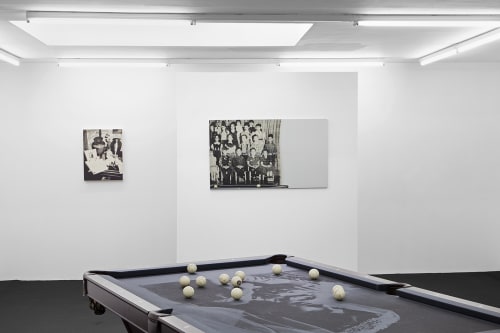The exhibition is part of "Crackle & Drag," which is the umbrella title of TR Ericsson's practice since 2003 and has developed into an inspired chronicle of a rustbelt family in post-industrial America. What begins as a soft, searing, and complex portrait of intimacy and Americana evokes universal themes of love, loss and ephemerality. With conceptual rigor and emotional directness, Ericsson uses a century's worth of family archives to reconstruct the past, exploring the healing powers of commemoration and the pitfalls of memory. His work raises difficult subjects such as domestic violence, mental illness, suicide, love, loss and financial struggle, as it investigates triangular relationships between three generations through the objects that outlive them.
"Crackle and Drag" has been the subject of solo exhibitions at the Cleveland Museum of Art and the Everson Museum of Art during the last three years, also earning the century-old Print Center International Award. An eponymous monograph earned distinctions in the Aperture and Kraszna Krausz awards. Works from this body are in the collections of the Cleveland Museum of Art, The Dallas Museum of Art, The Indianapolis Museum of Art, Harvard Library, MoMa (New York), the Whitney Museum, Yale University Collection and numerous private collections including those of Marguerite Hoffman and Agnes Gund. The film "Crackle & Drag," premiered in Belgium at Harlan Levey Projects in September 2015 before being presented in several festivals.
Throughout his career, Ericsson has also created works which bring artists who have influenced him into the narrative. Often it's in these works that the artist/author offers up intimate expressions related to his personal outlook and biography. Duchamp's Étant donnés was obliquely referenced in a series of powdered graphite works of Tom's wife, Rose, where she became the doppelgänger of both a murdered girlfriend and his deceased mother. Bruce Connor's Angels were inverted into erotic Lucifers in shadowy photograms of Rose, once more, but by far the most enduring and complex influence has been the work of Marcel Broodthaers, which connects the Blackout of 2003 to Soren Kierkegaard, a pool hall in NY and Ericsson's mother in Ohio.

